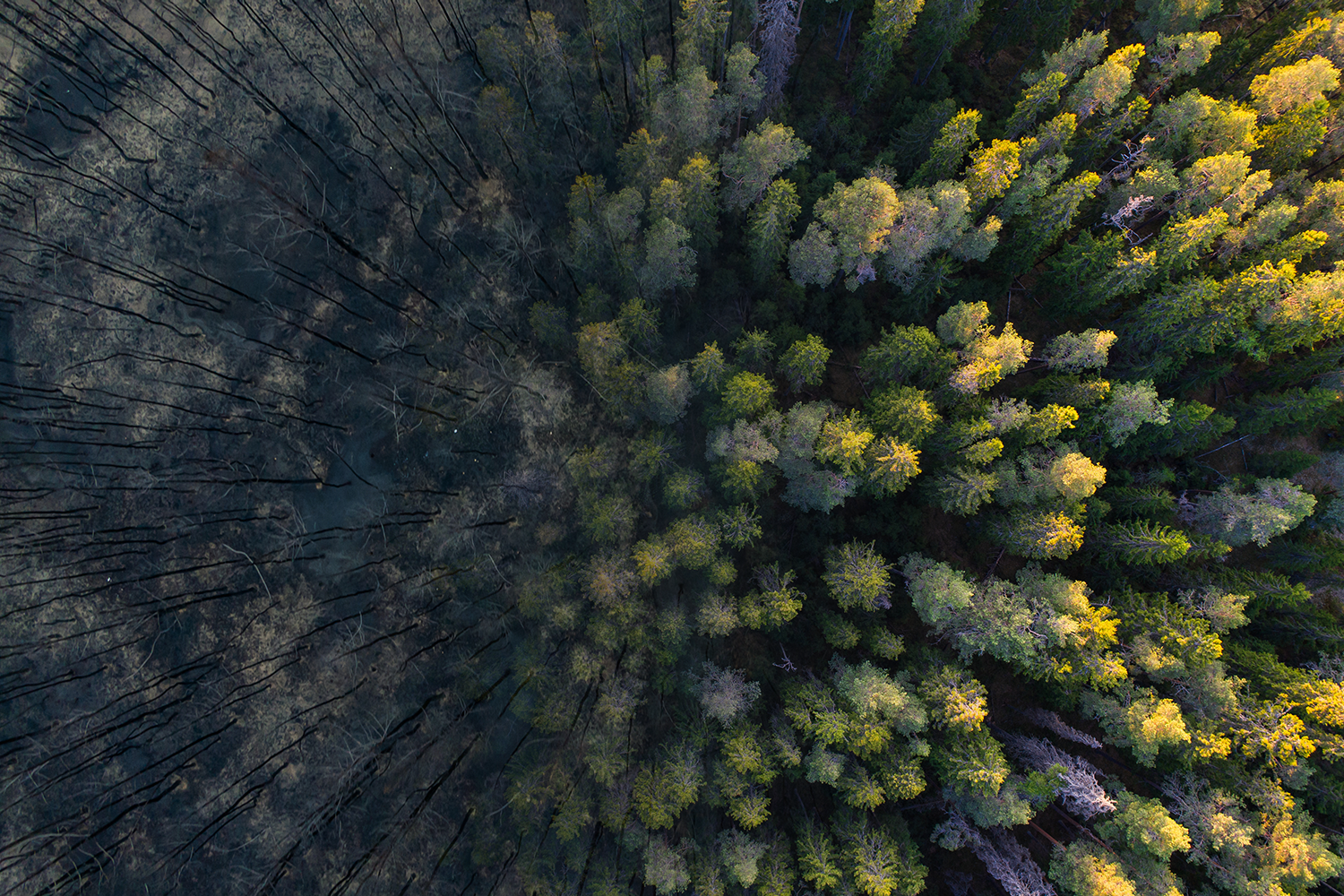
Here’s the problem. Wildfires burned more than 8.1 million acres1 across the United States this year; far surpassing the 7.5 million average recorded over recent decades. This is staggering compared to the 2.5 million acre average just thirty years ago. Since the early 90’s, we’ve been losing an extra New Jersey a year to wildfire. This alarming acceleration of forest loss, fueled by climate change, is compounded by the fact that increasingly, many of these wildfires have destroyed the forests’ seed sources, leaving behind devastated ecosystems that cannot recover without human intervention.
This is all occurring at a time when forests are needed more than ever for their ability to pull carbon out of the atmosphere, but insufficient government funding and seed and seedling capacity has failed to keep pace with the increasing need. This surge in wildfire scope and intensity has dramatically widened the reforestation gap that we at Mast are fiercely determined to close.
Across the Western U.S., it is estimated that 6 million acres of forests lost to wildfire will not recover without reforestation—a staggering shortage that would take approximately 50 years to address at status quo capacity.
This is too long for communities and our climate to wait. We depend on these forests for clean cool water, clean air, and habitat for wildlife.
With our team’s nursery and carbon expertise and operational scale, we’re taking on the four main challenges of seed supply, nursery capacity, replanting, and capital to pay for it all, that have stymied historical reforestation effort—and we’re getting results.
Scaling Reforestation by Mast
- Seed supply. Meeting current post-fire needs requires a 6x increase in available seed supply. Demand has long exceeded collection capabilities that are largely dependent on Mother Nature as each species in each growing region has its own unpredictable mast* cycle when large amounts of cones can be gathered, processed, and banked. Unlike agricultural crops, mast events that provide seed do not occur every year and there may be 5-10 years in between mast collection events in a region.
Mast has expanded seed available to communities by 3x in the Western U.S. through its two nurseries, Cal Forest and Silvaseed, the latter of which has operations that date back to the late 1800’s. Using advanced software to organize community collection events and manage inventory, we continue to gather and bank critical seed varieties prioritizing seed zones without inventory. Mast now holds the largest seed bank in the West and manages the majority of seed for the Western 11 states on behalf of communities and timber.
Mast now holds the largest seed bank in the West.
- Nursery capacity: Sourcing appropriate seed is just the first step; nursery space is essential to producing viable seedlings. About 1.3 billion seedlings are grown annually in the U.S., but at minimum, a 2x increase is needed by 2040.
Mast’s nurseries now grow more than 30 million seedlings each year with capacity to grow more. Cal Forest supplies the majority of seedlings for reforestation across California and up to 30% of all seedlings planted in Western U.S. reforestation projects. Expanded nursery operations, along with a 2024 grant from Cal Fire, are accelerating our ability to collect and process seed and grow seedlings.
- Landscape readiness: After severe fires, extensive preparation is required to support new seedlings. This involves clearing hazardous dead trees, managing invasive and competing brush that present new fire hazards, and restoring soil health to give seedlings the best chance of survival.
Mast’s experienced teams prepare landscapes for replanting and are now implementing novel carbon sinks onsite that provide optimal conditions for young trees and set the stage for long-term forest recovery..jpg?width=6000&height=4000&name=Planter%20on%20project%20site%20-%20Mast%20Reforestation%20(1).jpg)
- Capital: Federal, state, and local budgets cover a fraction of what’s needed for reforestation each year—they need more money. As high severity fires destroy the seed sources that landowners used to rely on for natural regeneration, more acres are requiring human intervention. Landowners wishing to restore their forests face a tremendous financial burden and few pathways to finance their forests’ recovery in a biodiverse manner when it costs several million dollars to restore several thousand acres.
Mast is leveraging carbon markets to scale reforestation and create a sustainable model to deploy much needed capital to landowners to restore forests to resilient, biodiverse ecosystems.
Mast has restored thousands of acres across the Western United States, and grown and planted millions of seedlings that will sequester hundreds of thousands of tonnes of carbon from the atmosphere.
Nature is Resilient Infrastructure
The ecosystems we restore are improving local air and water quality in a similar manner to desalination plants, water chillers, and direct air carbon capture. To ensure the forests we plant as infrastructure are resilient requires us to be intentional about those forests. We focus on diverse genetics and species through our cone collections of wild seed, and species selections that focus on polycultures of multiple native species. Our restoration projects not only restore forests but also support local economies and landowners, connecting them with partners and capital to revitalize their land. None of this would be possible without the funding from the end product—removal and storage of carbon to clean the air—carbon credits.
Future generations will benefit from the forests we restore and the communities we strengthen today and we invite you to join us. Connect with our team and explore our project pages to learn more.
Exciting developments are underway! Sign-up to keep up with how you can contribute whether by sharing our work or through catalytic contributions.
FOOTNOTES AND SOURCES
National Interagency Fire Center (NIFC) nifc.gov
*Yes! This was the inspiration for our company name.
U.S. Department of Agriculture: https://www.fs.usda.gov/managing-land/forest-management/vegetation-management/reforestation
Frontiers.org https://www.frontiersin.org/journals/forests-and-global-change/articles/10.3389/ffgc.2021.629198/full
